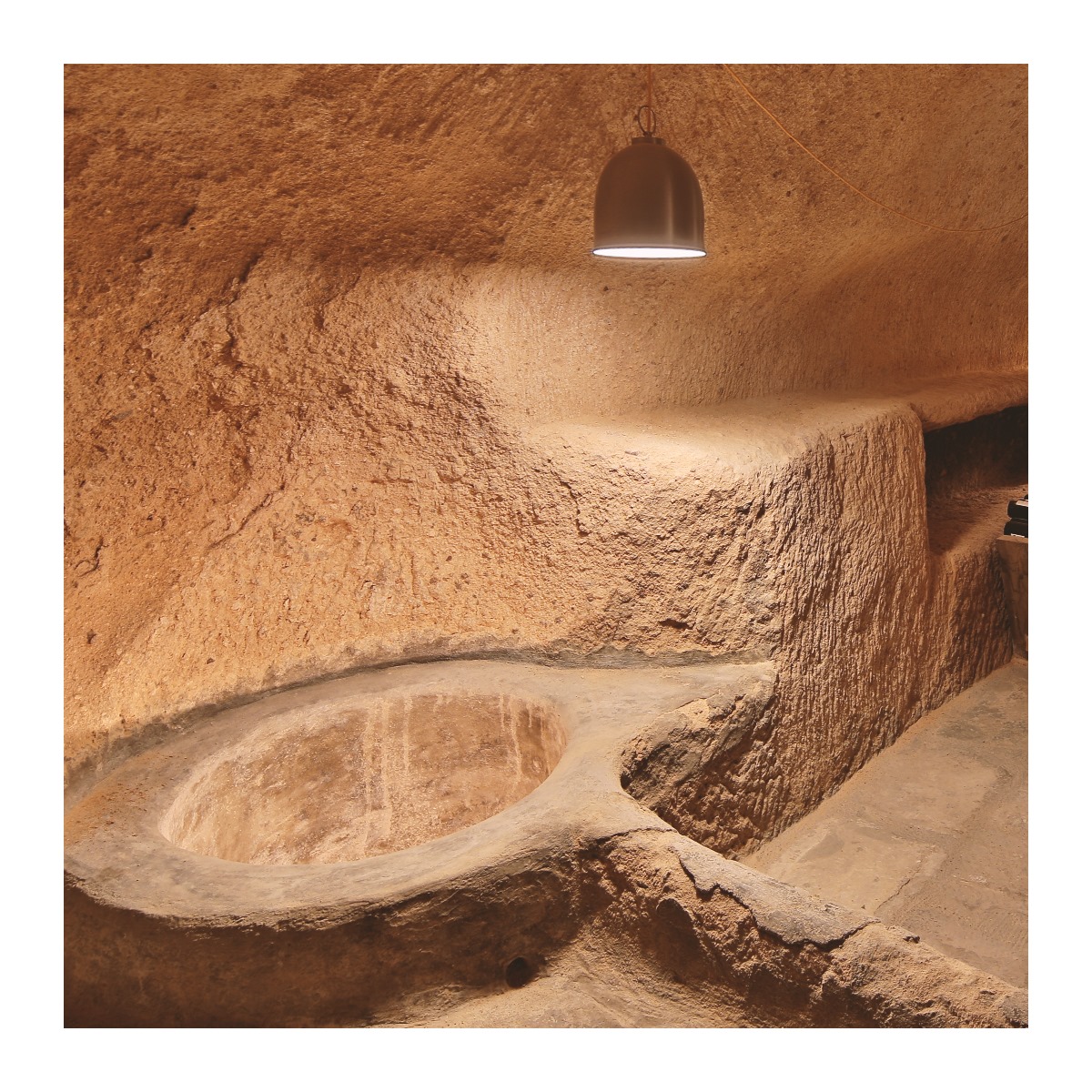General Information
Rock-Cut Wineries in Cappadocia During the Byzantine Period
Historical and Cultural Background
Cappadocia has been an important region for viticulture and wine production since ancient times. The vineyard and wine culture, which dates back to 4000 BCE in Mesopotamia, spread to Anatolia and particularly flourished during the Hittite period. The Hittites are considered one of the greatest viticulture and wine civilizations in history (Güzel, 2022: 119).
During the Ottoman period, viticulture was not prohibited, and wine production continued among Christian and Jewish communities. It is known that in 1904, the Ottoman Empire exported 300 million liters of wine (Güzel, 2022: 121).
All wineries feature a grape-crushing area consisting of a small basin at the top. At the center of the upper grape-crushing basin, there is a conical opening. The must obtained from here undergoes various processes before being turned into wine and stored in jars for preservation and use (Okuyucu, 2008: 140).
The wineries in Nevşehir are generally located within underground cities and rock-hewn houses. In underground cities such as Özkonak, Derinkuyu, Kaymaklı, and Tatlarin, wineries were strategically placed near kitchens and food storage areas. One reason for their placement on upper floors was to allow grapes to be processed by being poured down through a chute (Okuyucu, 2008: 142).
Architectural and Functional Features of Wineries
In Cappadocia, wineries are defined as rock-hewn structures where grapes are crushed and transformed into must, molasses, or wine. These structures consist of two main sections: the grape-crushing area and the must-collection section, connected by a channel. The must flowing from the crushed grapes is transferred into vats or jars (Yeşil, 2020: 25).
Viticulture and Wine Culture in Cappadocia
“The Cappadocia region, due to its geographical and physical characteristics, is suitable for grape cultivation and has been significant for its wine workshops since antiquity. The topic of grape production, production technologies, and agricultural organization is multidimensional, showcasing the importance of viticulture both as a livelihood and as an economic contributor through its processing in various workshops” (Güneri, 2013: 1).
"Grapes produced in the region are not only consumed fresh or dried but are also used in the production of molasses, vinegar, and wine. The grapes intended for molasses, vinegar, and wine are processed in special places called ‘wineries,’ ‘wine houses,’ ‘must houses,’ or ‘must processing rooms.’ In autumn, after the grape harvest, wineries serve as production spaces where grapes are stomped and crushed to extract their juice. In other words, a winery can be defined as a rock-hewn chamber where grapes are transformed into must, molasses, and wine. These structures consist of two connected sections, with a channel facilitating the transfer of crushed grape juice from one section to another. The collected must is then transferred into jars or vats” (Yeşil, 2020: 24-25).
Wineries can be found in rock-hewn houses and churches. These structures were built in harmony with traditional architecture and have been restored and showcased for tourism purposes. In some hotels, rooms are named after traditional elements such as ‘tıfana’ (kitchen), ‘winery,’ and ‘cellar’ to offer tourists an authentic experience (Yeşil, 2020: 25).
Economic and Cultural Significance of Wineries
The region benefits significantly from wine production and tourism as a source of income. Wine production not only supports tourism activities but also serves to promote the local culture and history (Yeşil, 2020: 28).
"With the growth of tourism activities in the region, homes have been transformed into hotels, and wineries have been preserved in their original form without altering their authentic architecture. These spaces are exhibited in their natural environment and introduced to visitors within the scope of cultural tourism" (Yeşil, 2020: 25).
"From the perspective of cultural economics, the primary output of wineries is wine production and consumption. Traditional wineries or modern adaptations designed for contemporary conditions prepare wine for local and international consumers. Nevşehir has become a major economic hub in the wine industry, generating significant revenue. The consumption and tourism surrounding wine also contribute to cultural marketing and promotion. Wine houses, wineries, and festivals illustrate the journey of wine from the vineyard to bottling. In some businesses, traditional wineries are incorporated into the experience for wine consumers” (Yeşil, 2020: 28).
© 2025 Digital Cappadocia. All rights reserved. Unauthorized use of this content is prohibited.

